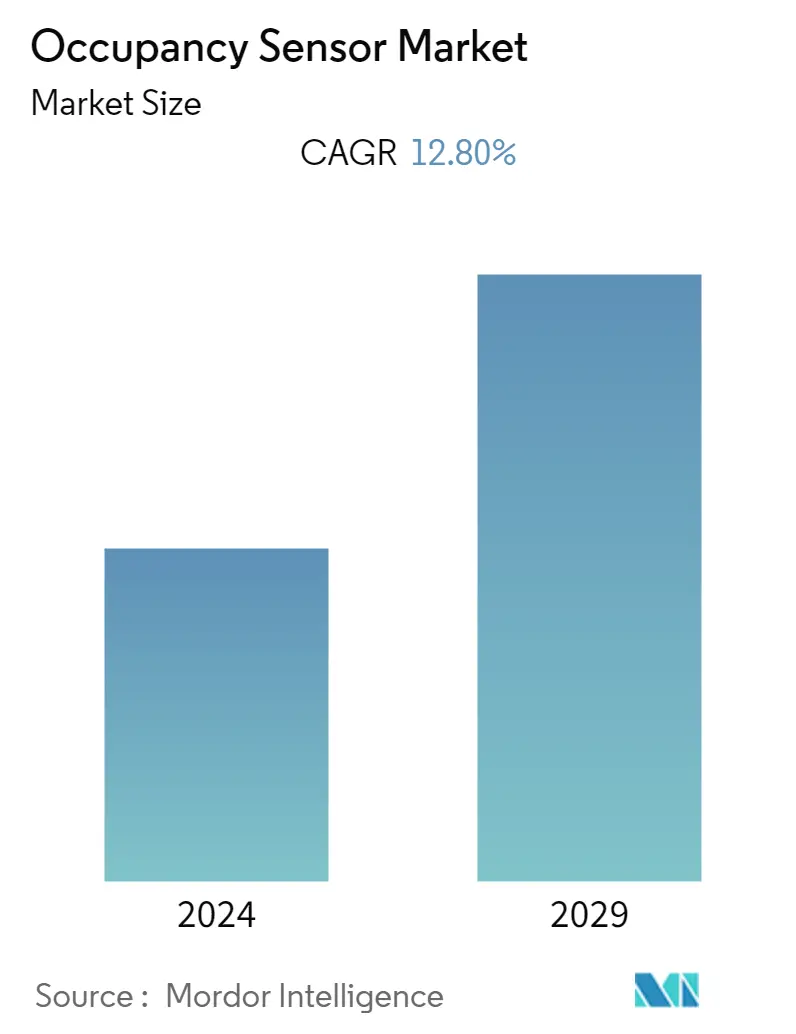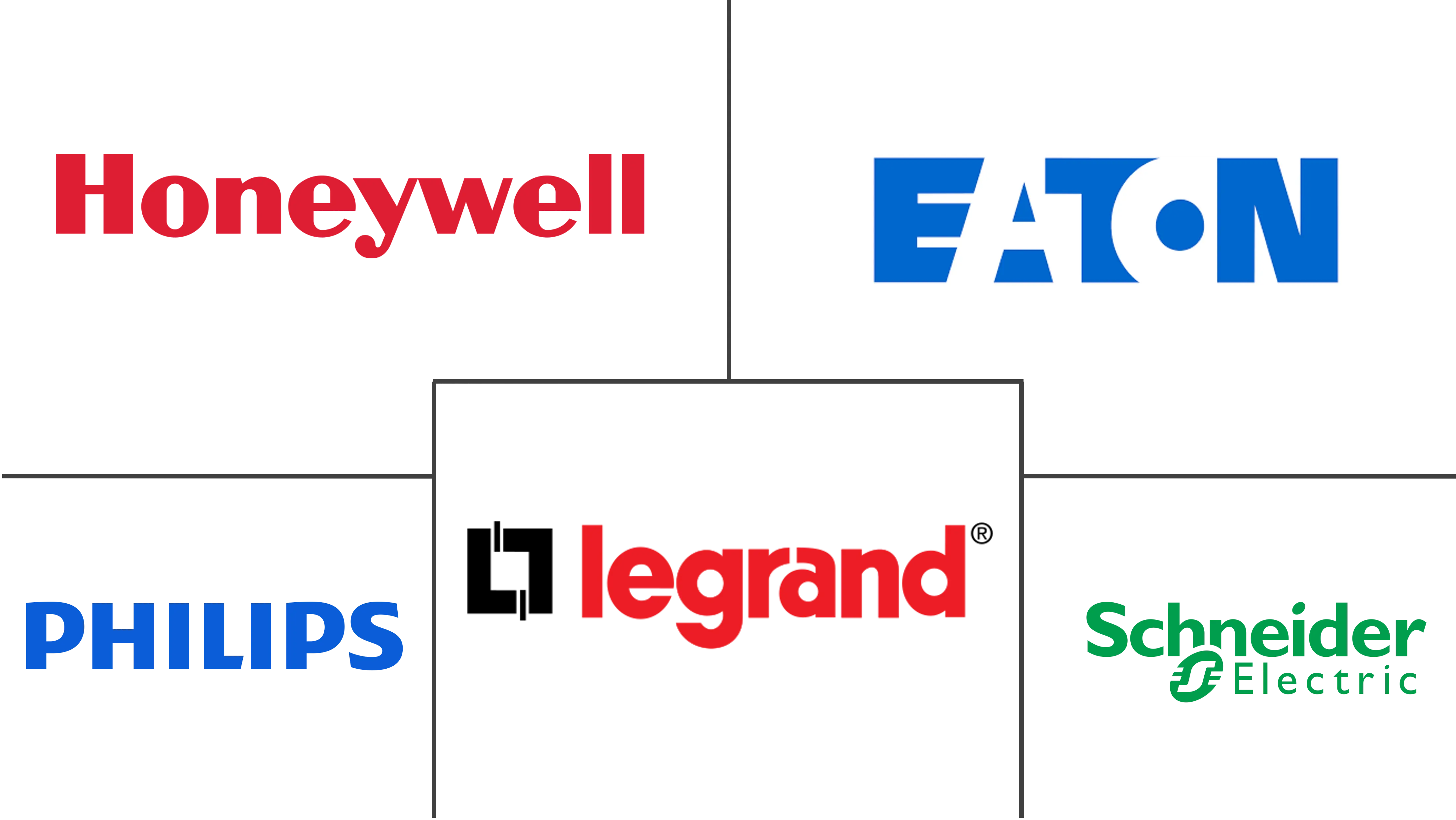Market Size of Occupancy Sensor Industry

| Study Period | 2019 - 2029 |
| Base Year For Estimation | 2023 |
| CAGR | 12.80 % |
| Fastest Growing Market | Asia Pacific |
| Largest Market | North America |
| Market Concentration | Low |
Major Players
*Disclaimer: Major Players sorted in no particular order |
Need a report that reflects how COVID-19 has impacted this market and its growth?
Occupancy Sensor Market Analysis
The Occupancy Sensor Market registered a CAGR of 12.8% over the forecast period. Sensor-laden lighting systems now have industry acceptance for data-driven applications beyond lighting. In the coming years, OEMs (original equipment manufacturers) may integrate sensors in luminaires to create smart luminaires that can be an integral part of a connected lighting system. Thus, this may drive the market in the future.
- The global occupancy sensor market is expanding rapidly and will continue to expand in the near future. An occupancy sensor is an indoor motion detector that detects the presence of a person in order to operate lights, temperature, or ventilation systems automatically. It turns off lights in empty areas, lowering energy expenses by reducing energy waste.
- Furthermore, as scheduling becomes difficult with occupancy sensors, these are ideal for tasks requiring micro-control. Occupancy sensors are generally used for security purposes, such as preventing damage, burglary, and stealing. These are also utilized to give automatic control, conform with construction requirements, and conserve energy.
- The rising demand for energy-efficient devices is expected to drive the market. Occupancy sensors play a vital role in reducing energy consumption. This is achieved through the sensors, which shut down devices and other equipment on the basis of occupancy. These sensors help in reducing light pollution, and they can be used for indoor and outdoor spaces.
- The demand for passive infrared is expected to continue in the future due to the low cost, demand for energy-efficient devices, and less power requirement. It has a range of applications, such as lighting, spectrometers, gas and fire detection systems, etc. Some of the major benefits of passive infrared sensors are accurate movement detection, reliable triggering, and cost efficiency.
- Despite significant advertising, occupancy sensors are less developed than other lighting technologies, such as motion sensors and vacancy sensors. It is hampered by the difficulty of precisely forecasting the occupant's occupancy. An occupancy sensor's performance is affected by user occupancy, lighting control patterns, and sensor selection. Furthermore, it is regarded as expensive, and there is little awareness of the cost-related benefits of occupancy sensors. This is a barrier to the occupancy sensor market since it has an impact on penetration rates in developing and undeveloped economies.
- During the outbreak of COVID-19, the market witnessed a halt in production and disruption across the supply chain, leading to weakened growth of industrial output and the decline of the occupancy sensor output across significant manufacturing hubs. Manufacturing is anticipated to reach pre-COVID levels over the forecast period as construction of new homes and buildings picks pace.
- The pandemic affected the construction industry, which led to a slump in demand for occupancy sensors, as the newly constructed buildings in the residential and commercial sectors are primary areas of opportunity that support the market's growth. Owing to the restrictions put in place by the governments, all construction activities and most business activities across multiple countries have been affected.
